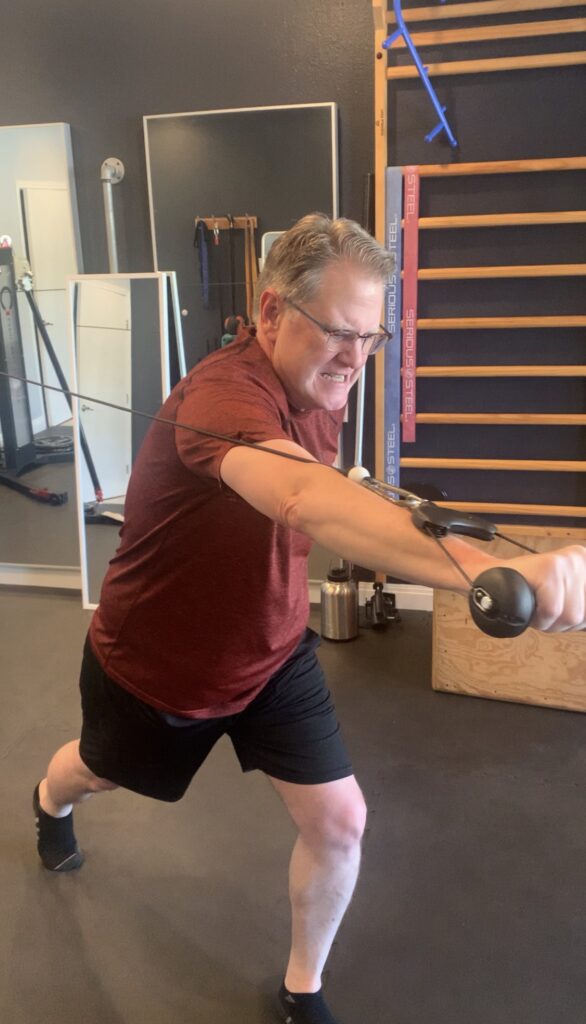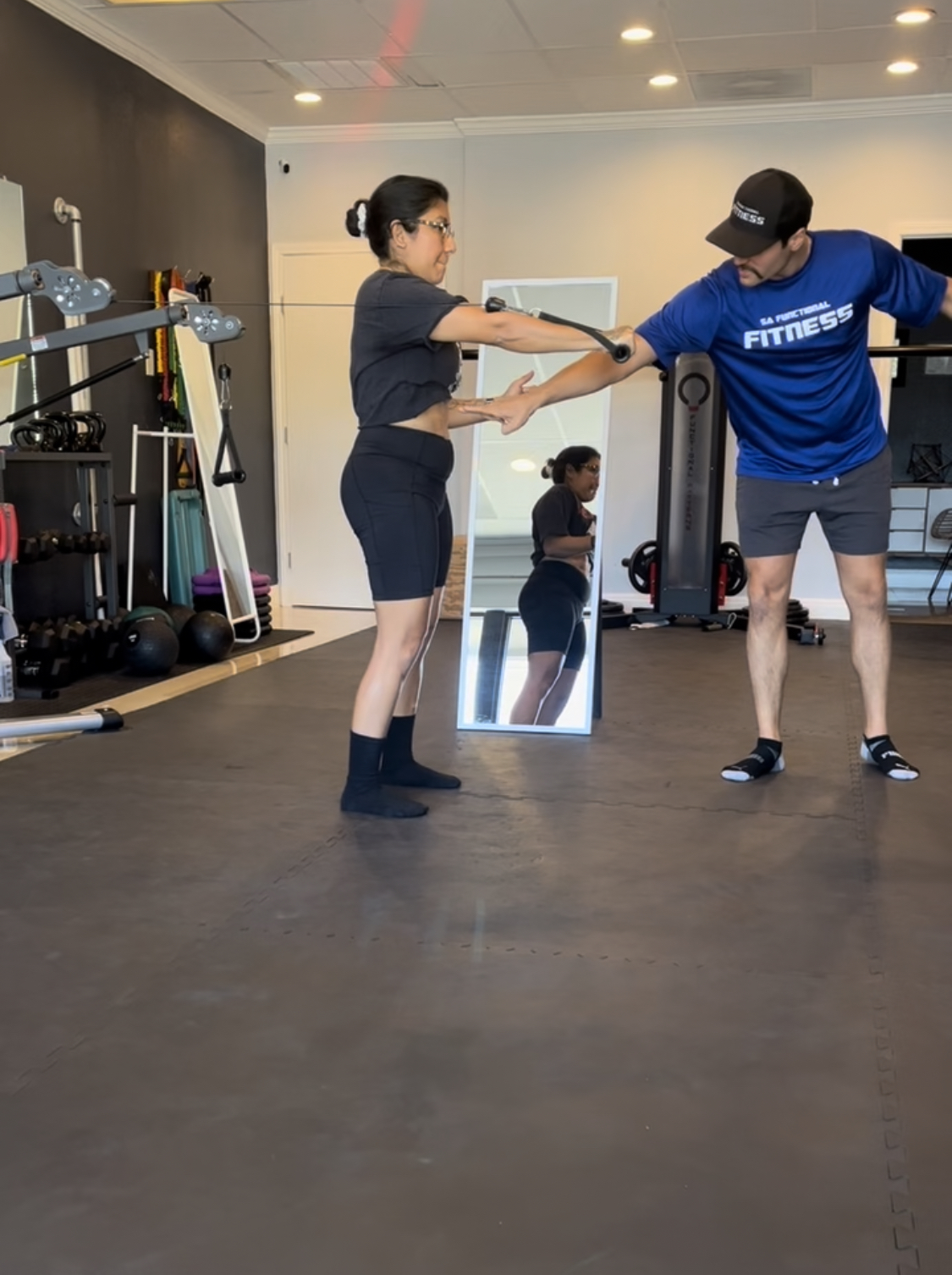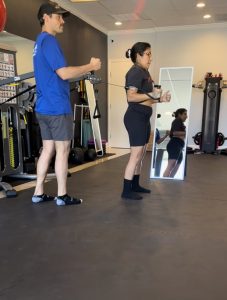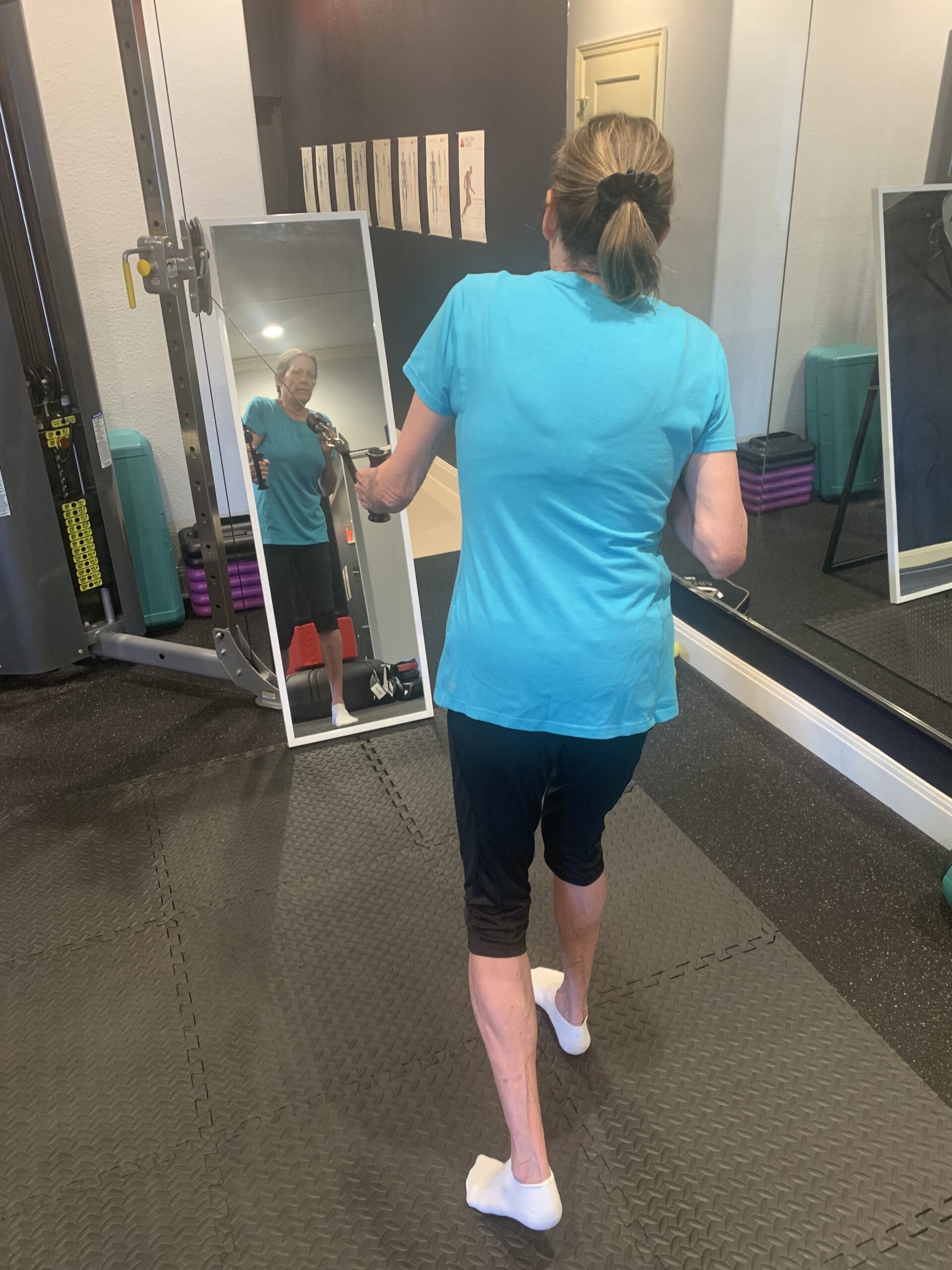Our exercises load the patterns of the gait cycle. Which means the mechanics of the exercises carry over to the mechanics of walking and running. This is important because as humans we walk daily, it’s one of our most frequently used movements so our goal is to get your body strong in that fundamental context; which will carry over to other aspects of function.
Bipedal contralateral movement is what developed our muscles and why they function the way they do. Modern times have made it difficult to keep our muscles functioning the way they were designed because we use the wrong lifting patterns when we exercise, we’re sedentary… and then we SIT on an exercise bike for “exercise”, we stretch the wrong way resulting in flaccid muscle tissue. All of these variables effect the way your body functions in real life.
In our gym we train your body to move the way your body naturally moves in life outside the gym. Simple looking, but not so easy to perform (correctly) when your body has been out of touch with these foundational movements. It takes time and repetition to reconnect your muscles and get them working optimally.
Contact us to set up an introductory session to assess your current movement patterns and why they’re causing your body problems. Learn to solve those problems with exercise that simultaneously builds strength and mobility, while addressing dysfunctional mechanics and correcting your functions back to optimal so your body can move well and perform without pain.
















